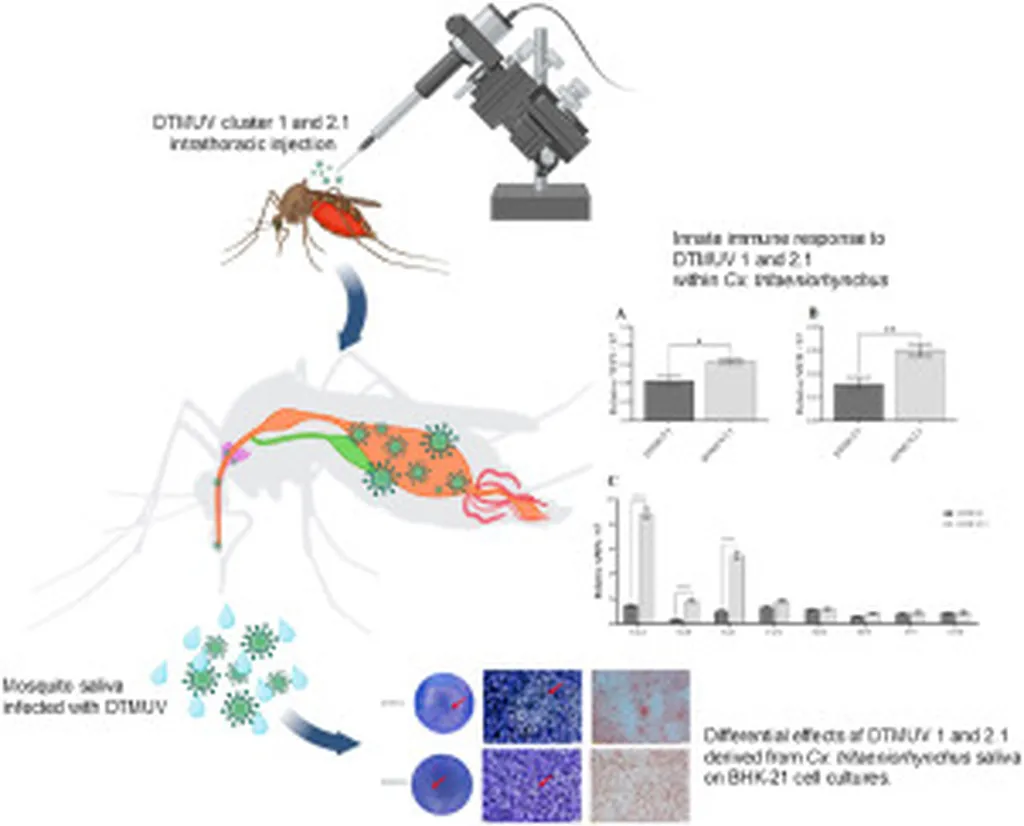In a groundbreaking study published in the *Journal of Virology*, researchers have uncovered a novel antiviral mechanism that could significantly impact the fight against the duck Tembusu virus (TMUV), a pathogen causing substantial economic losses in the poultry industry. The study, led by Peng Zhou from the State Key Laboratory of Agricultural Microbiology at Huazhong Agricultural University in Wuhan, China, reveals how the host protein MARCH6 plays a crucial role in suppressing TMUV replication.
TMUV, an emerging flavivirus, has been a persistent threat to duck farming regions across Asia since its outbreak in 2010. Its recent expansion into mammalian hosts has raised alarms about its potential broader impact. Understanding the intricate interactions between TMUV and its hosts is essential for developing effective treatments and vaccines.
The research team discovered that MARCH6, a protein known for its role in various cellular processes, is significantly upregulated during TMUV infection in several duck cell lines. This suggests a conserved cellular response aimed at combating the virus. Functional analyses showed that overexpressing MARCH6 effectively suppressed TMUV replication, while knocking it down enhanced viral proliferation.
“What we found was quite surprising,” said Peng Zhou, the lead author of the study. “MARCH6 doesn’t just suppress viral replication; it does so through a mechanism that doesn’t rely on its traditional E3 ligase activity.”
The study revealed that MARCH6 directly interacts with the viral non-structural protein 5 (NS5), targeting it for degradation. This process involves the recruitment of the autophagic cargo receptor TOLLIP, which facilitates the degradation of NS5 through selective autophagy, bypassing the conventional ubiquitin signaling pathway.
“This is a novel host defense strategy,” explained Zhou. “By targeting NS5 for degradation via selective autophagy, MARCH6 provides a robust mechanism to control viral infection.”
The implications of this research are far-reaching. Understanding the MARCH6-NS5-TOLLIP axis could lead to the development of new antiviral therapies and vaccines, not only for TMUV but potentially for other viruses that employ similar mechanisms. This study highlights the importance of selective autophagy as a fundamental mechanism in antiviral defense, offering a new avenue for exploring host-virus interactions.
As the poultry industry continues to grapple with the economic impact of TMUV, this research provides a beacon of hope. By elucidating the role of MARCH6 in antiviral defense, scientists are one step closer to developing effective strategies to combat this devastating virus.
The findings, published in the *Journal of Virology* (translated as “病毒学杂志” in Chinese), represent a significant advancement in the field of virology and offer promising prospects for future research and development in antiviral therapies.

